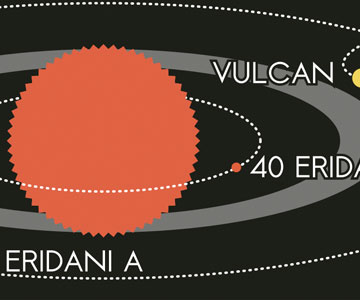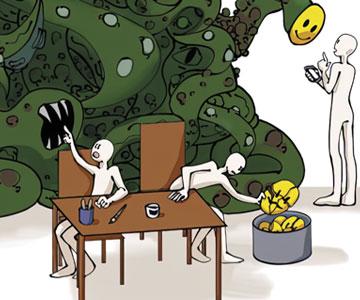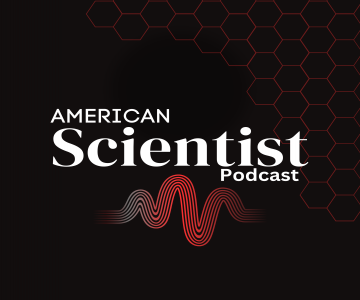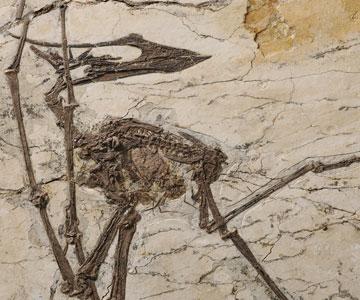Magazine
September-October 2025
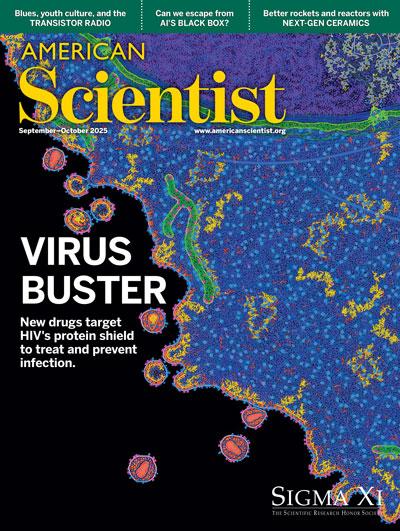
September-October 2025
Volume: 113 Number: 5
When HIV enters a cell, its genome (white strand, top right corner) incorporates into the cell’s genome in the nucleus. As the cell activates its genes, the virus’s genes turn on too. The cell then transcribes the viral RNA (yellow squiggles), which moves through the cell and is used to synthesize the virus’s proteins (red). As the viral RNA and proteins accumulate at the cell’s membrane, the immature viral particles bud off, taking with them pieces of the membrane and its proteins (magenta). Viral enzymes finish processing the proteins to create the HIV capsid (the protein shell that encloses the virus’s genome) leading to a fully mature virus particle. In “A Revolutionary Drug to Treat and Prevent HIV Infection,” author John Raul Somoza describes the process of developing a new drug, lenacapavir, that interferes with capsid assembly and movement. (Cover illustration by David S. Goodsell, B-HIVE Center, RCSB Protein Data Bank and Scripps Research. doi:10.2210/rcsb_pdb/goodsell-gallery-047)
In This Issue
- Astronomy
- Biology
- Chemistry
- Communications
- Engineering
- Ethics
- Medicine
- Physics
- Policy
- Psychology
- Sociology
- Technology
Trial by Fire
William G. Fahrenholtz, Greg E. Hilmas
Chemistry Engineering Physics Technology
Producing ultrahigh-temperature ceramics that can meet the demands of the future requires innovation, creativity, and a touch of serendipity.
Space Tourism
Mark McCaughrean
Astronomy
A trip through the Solar System would not be complete without visiting these out-of-this-world locales.
